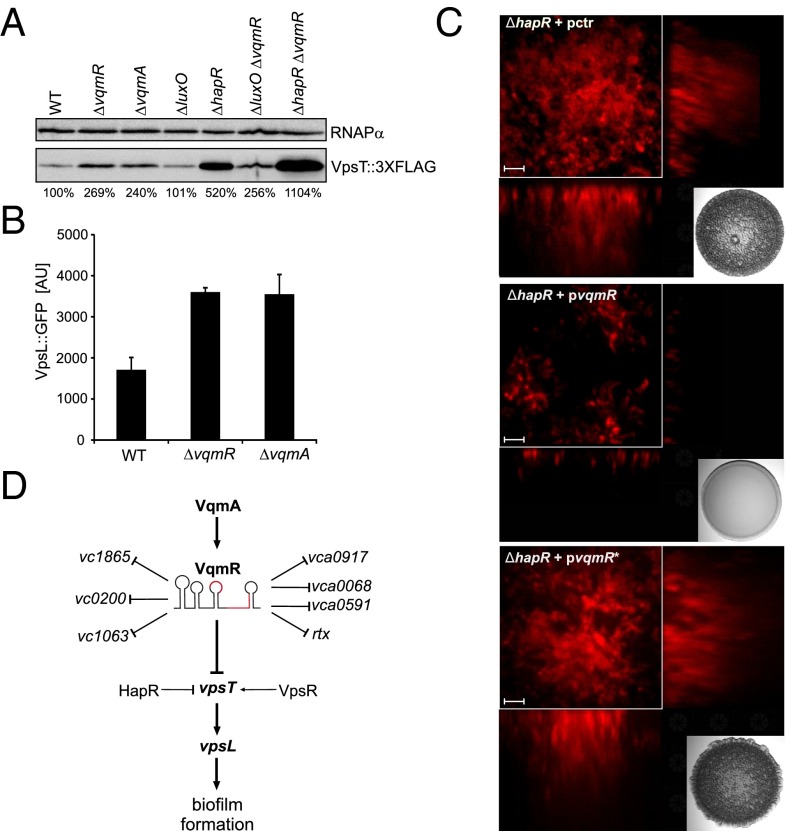Fig. 7.
VqmR represses biofilm formation in V. cholerae. (A) Western blot analysis of VpsT::3XFLAG. Wild-type, ΔvqmR, ΔvqmA, ΔluxO, and ΔhapR single mutants and ΔluxO vqmR and ΔhapR vqmR double mutant V. cholerae strains were grown to OD600 of 1.0 and examined for VpsT::3XFLAG production using an anti-FLAG antibody. RNAPα served as the loading control. Changes in VpsT::3XFLAG protein production are indicated below the figure (WT was set to 100%). (B) Production of VpsL::GFP. Wild-type, ΔvqmR, and ΔvqmA V. cholerae strains carrying a vpsL::gfp transcriptional reporter on a plasmid were grown for 6 h and GFP production was measured. Error bars represent SD of three replicates. (C) Biofilm production of vqmR-expressing strains. Biofilm formation of the ΔhapR V. cholerae strain constitutively expressing the fluorescent mKate2 protein was assayed in the presence of a control plasmid (Top, pctr), a plasmid carrying vqmR (Middle, pvqmR), or a plasmid carrying VqmR C94G (pvqmR*) that does not base pair with vpsT (Bottom). Biofilms were imaged following a 24-h incubation at 30 °C. (Scale bar: 5 µm.) The inlays show the colony morphologies of the indicated strains grown on agar plates and incubated for 24 h at 30 °C. (D) Model of VqmR activity in V. cholerae. Transcription of vqmR is activated by VqmA. VqmR directly regulates at least eight target mRNAs including vpsT. VpsT, in turn, acts as an activator of VpsL production and biofilm formation.

